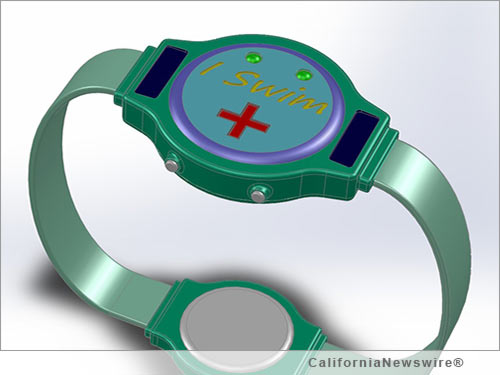SAN DIEGO, Calif. /California Newswire/ — In the U.S., children aged one to four have the highest drowning rates. And most drowning occurs in pools. Better Life Technologies Group, Inc. has announced a new patented technology product that's designed to save children's lives. According to studies, young children, African-Americans and males seem to be the most vulnerable. Accidents continue to happen, yet many go unreported.
George A. McKinney, president and CEO, Better Life Technologies Group, recounts a story of a party he attended that ends in death and destruction, but that ultimately led to the birth of the first serious swim safety system.
The story, like many other drowning-related stories, begins with a party and a family. In the fall of 2009, a swim party was hosted by a family who had been throwing these types of parties for nearly 10 years without incident. Safety was observed and watchful eyes were all around. However, it only took a few seconds during a game of dead man's float. No one noticed that the game had quickly turned into a reality. A seven-year old boy was at the bottom of the pool.
CPR was performed and 911 was called. The paramedics were there within minutes. The boy was rushed to the hospital, but was rapidly pronounced dead. This boy's name was Albert Jones.
As a result of this experience, McKinney was prompted to do research about drowning and its effect on households. He was determined to design a swim safety device that would lessen future tragedies.
In February 2014, a swim safety system device called the "Albert Jones Anti-Distress Device" (AJADD) U.S. Patent #8,659,435 B2 was released. It is a device that is geared to making lives safer in every underwater situation around the globe.
"I envisioned an underwater distress signal device in the form of a watch or hand instrument that could be worn on the body," McKinney says. "This signal coupled with GPS, vitality monitoring and swimmer identification technologies, would work together to form a solution."
This new life-saving device adds a layer of protection for potential drowning victims. It allows a swimmer to send and receive signals to and from a lifeguard or caretaker. Signals can be communicated via land or ship. So, if a swimmer is in distress, the swimmer can transmit vitality, or other needed information, to a lifeguard or caretaker.
"The beauty of this system is that it also allows the lifeguard or caretaker to monitor the activities of several swimmers in real-time, at the same time," McKinney says.
The applications of the Albert Jones Anti-Distress Device could be far-reaching, including use in swimming pools, rivers, lakes and in the ocean. It could even be used on cruise ships, oil rigs, and by the U.S. military.
McKinney is currently seeking investors to help him complete his first prototype. He has already assembled a team of electrical and mechanical engineers and doctors to build it, but he needs qualified investors who will later share in the company profits.
A percentage of the proceeds from product sales will be designated to help children and families affected by drowning, and for swim lessons for impoverished youth.
More information: http://betterdesigntechnologies.com/ .
To view a product video: http://vimeo.com/87806730 .
To access the president's LinkedIn profile visit: http://www.linkedin.com/pub/george-mckinney/66/b7a/a4 .
Follow them on Twitter: https://twitter.com/starcolony8 .
About Better Life Technologies Group, Inc.:
Better Life Technologies Group, Inc. is driven by its mission to create the first cutting-edge swimmer safety systems that capture critical, real-time human vitality signs by using GPS and other life-saving data, and creating monitoring techniques for the prevention of human health dangers and death in water.
Journalists or investors can contact George McKinney at +1-619-517-6729 or betterlifetechnologies@gmail.com .
Copyright © 2014 CaliforniaNewswire® and Neotrope®. California Newswire is a publication of the Neotrope News Network and a U.S. reg. TM of Neotrope.
NBC IN SAN DIEGO PICKED UP OUR STORY:








